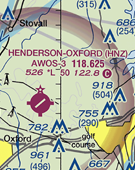Be Prepared: When faced with an emergency, multi-engine pilots should remember the Boy Scout motto
The key to any emergency is the Boy Scouts’ motto: Be prepared.
The good multi-engine pilot must be prepared for an engine failure. But what goes into being prepared? And what elements must the pilot consider when faced with an emergency?
TIME
This is an often neglected consideration. Obviously if you are cruising at a reasonably high altitude, you will have much more time to evaluate the situation than if an engine fails just after takeoff.
Unfortunately most of our training revolves about the latter situation. Many years ago I was flying a charter in a twin engine airplane. My co-pilot was flying this particular leg when the right engine suddenly quit. Now he was a fairly young pilot. Due to the difference in age, his reflexes were considerably faster than mine.
In a heartbeat, he pushed everything forward, and determined the right engine was the problem. In another heartbeat he moved the prop control to the feather position. Fortunately my reflexes weren’t that bad, and I was able to push the prop control forward before it feathered.
Subsequently we were able to get the engine running again. This might not have been possible if the engine had feathered. His planning was poor in that he failed to consider the time element. We were at a safe altitude and had the luxury of time. He was thinking engine failure on takeoff.
Time really refers to altitude. The more altitude you have, the more time you have.
KNOW YOUR AIRPLANE
A good multi-engine pilot knows his equipment and can plan the best course of action based on available time and altitude. For instance does the airplane you fly have auxiliary fuel pumps? Most twins do. If so, are they on or off for takeoff? Today, many manufacturers call for them being off on takeoff. If this is the case, the competent pilot should be prepared to instantly turn them on for an engine that fails shortly after take off. It could restore power immediately. The same could be said for switching fuel tanks or turning on cross feed.
To handle a low altitude emergency you should know what actions you can take that could possibly restore power immediately. This means knowing your airplane. Then you must prime yourself to take this action in the event of such an emergency.
Quite often on a flight test, I will ask an applicant what he or she would do if there was an engine failure 30 seconds after takeoff. All too often I get the “book” answer of “refer to the emergency check list.” Unfortunately there will not be time to do this. You must react immediately. You should train yourself to know exactly how to find the aux fuel pump switch, how to switch fuel tanks or go to cross feed, and the proper feathering procedure.
You should be able to perform these memory items without taking your eyes off of the important job of flying the airplane.
ESTIMATE AIRCRAFT PERFORMANCE
Before takeoff you must take into account many variables, including the three most important: density altitude, weight, and runway length.
Know the single engine ceiling of your airplane. This is the altitude at which you can maintain level flight. In most normally aspirated twins it is approximately 6,500 feet density altitude.
Obviously if you are operating close to or above this altitude, there is no chance to climb, and your planning must take this into account.
Weight is also important. Don’t expect the airplane to perform at maximum gross weight the way it did in your training when you were probably well below gross. It is a good idea to fly the airplane loaded and see what it can do on one engine at altitude. You will probably get an unpleasant surprise.
Unfortunately performance data for light and medium twins is sparse in the Pilots Operating Handbook. You should therefore do a little experimenting to become familiar with your airplane’s performance. This can be done safely at altitude and will provide you with important information for takeoff planning.
Finally, consider runway length. It may be you are committed to flying immediately after lift off on a short runway. On the other hand, if you are operating from a 12,000-foot runway, you may have time to get back on the ground safely after an engine failure.
My first rule is this: If I am on the ground when an engine fails, I will immediately pull back the other engine and stop. I would rather run off the end of the runway decelerating, then try to fly and hit something else while accelerating.
Furthermore I will not retract the landing gear until I have reached a point where I can no longer get back on the runway. If I have not retracted the gear, and an engine fails, I will immediately pull the power on both engines and land.
The important thing to notice is that by developing this procedure you are evaluating a go/no-go point on every takeoff, and the decision has already been made for you.


